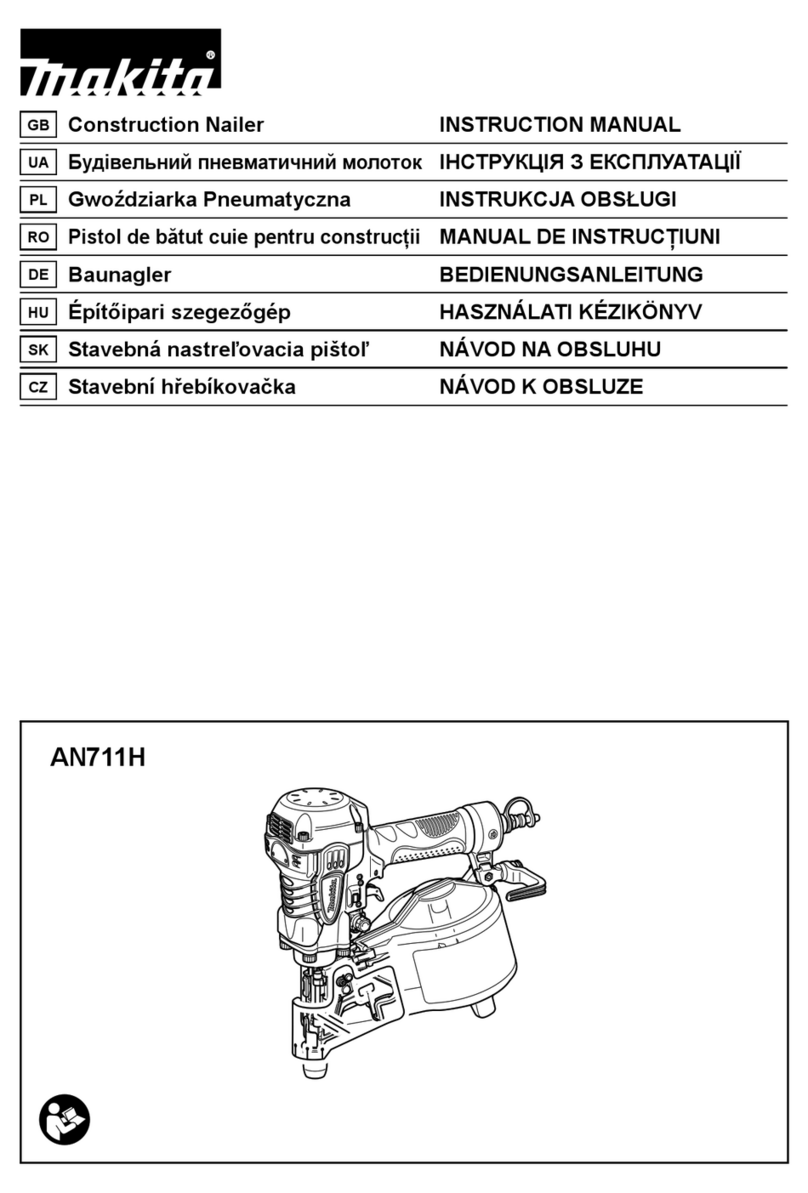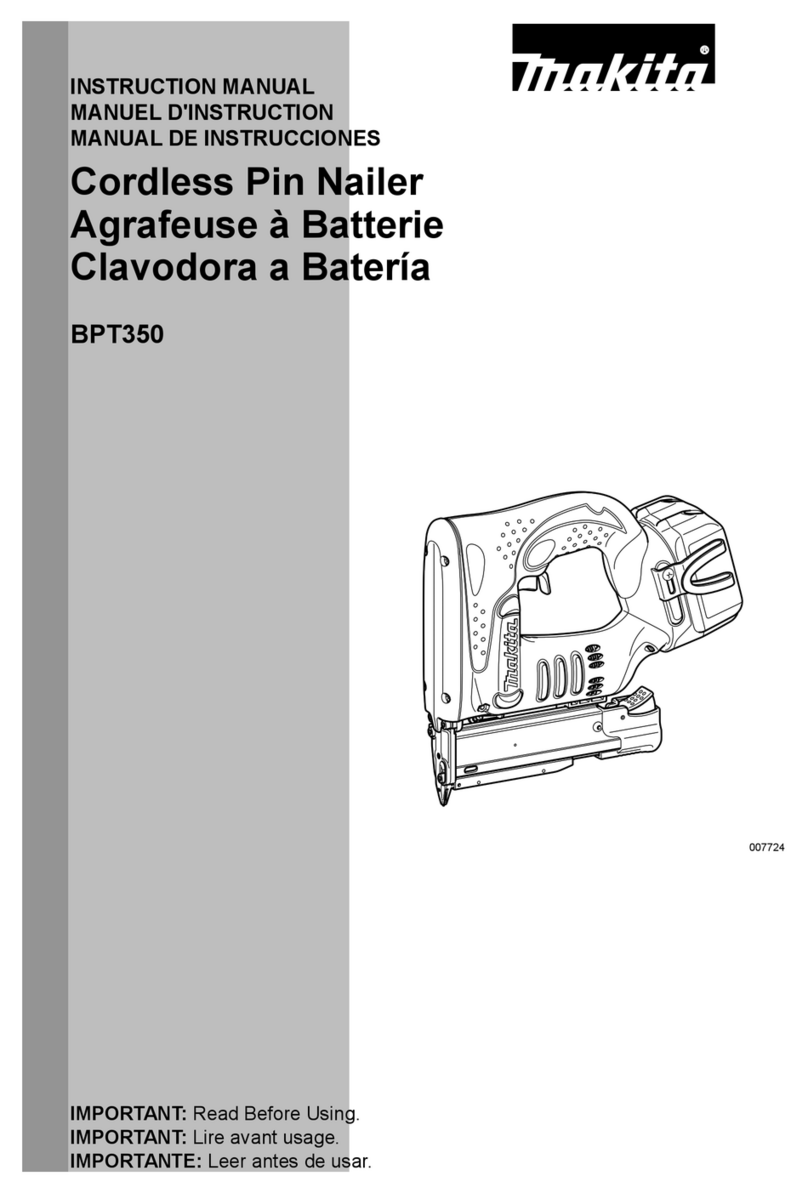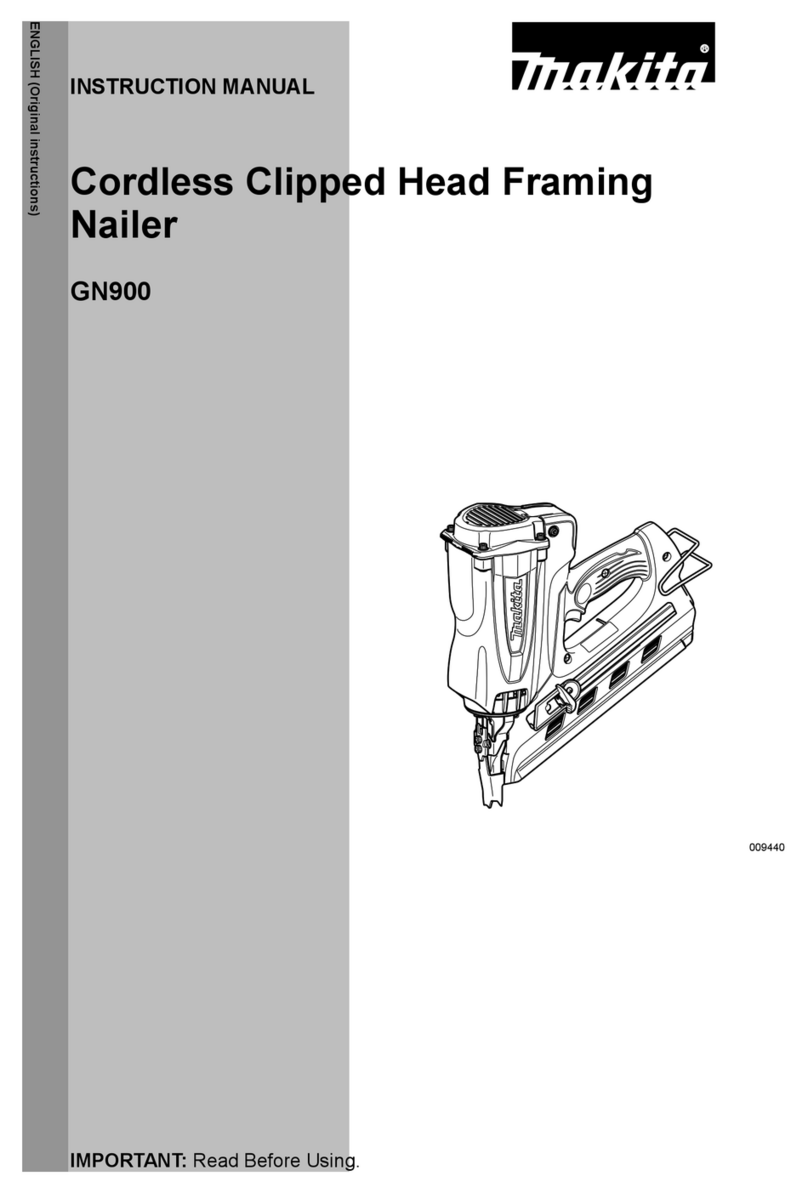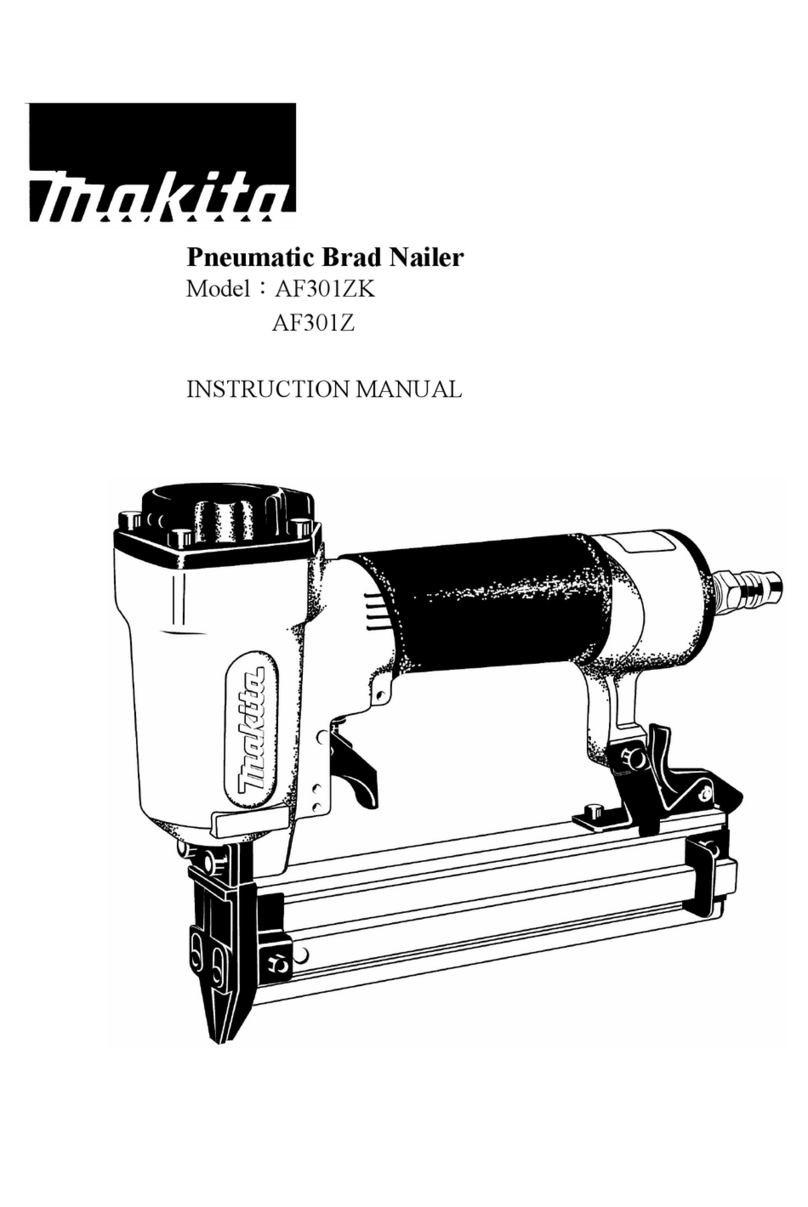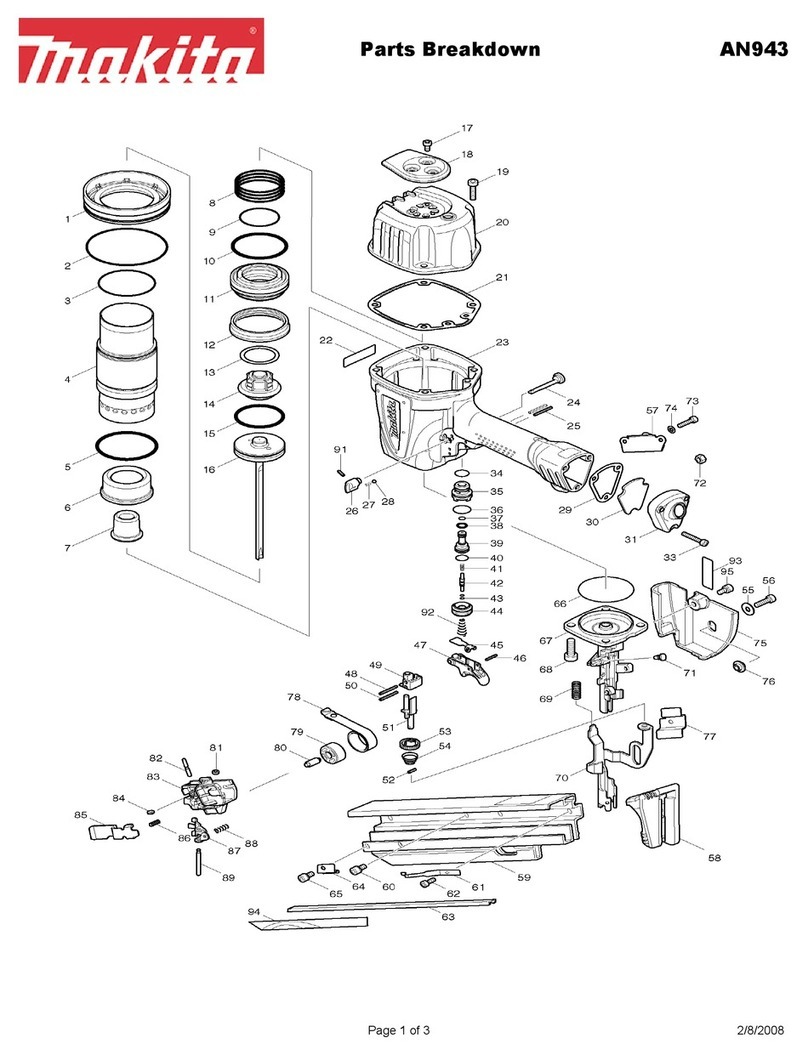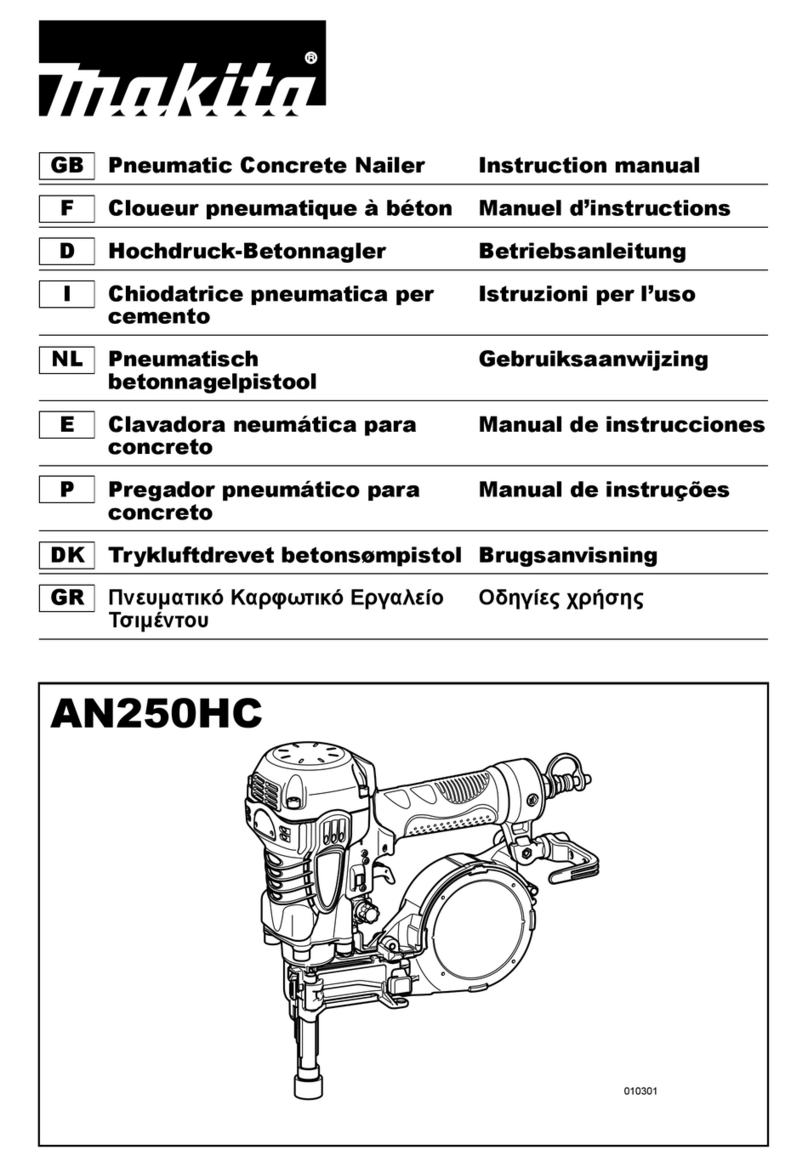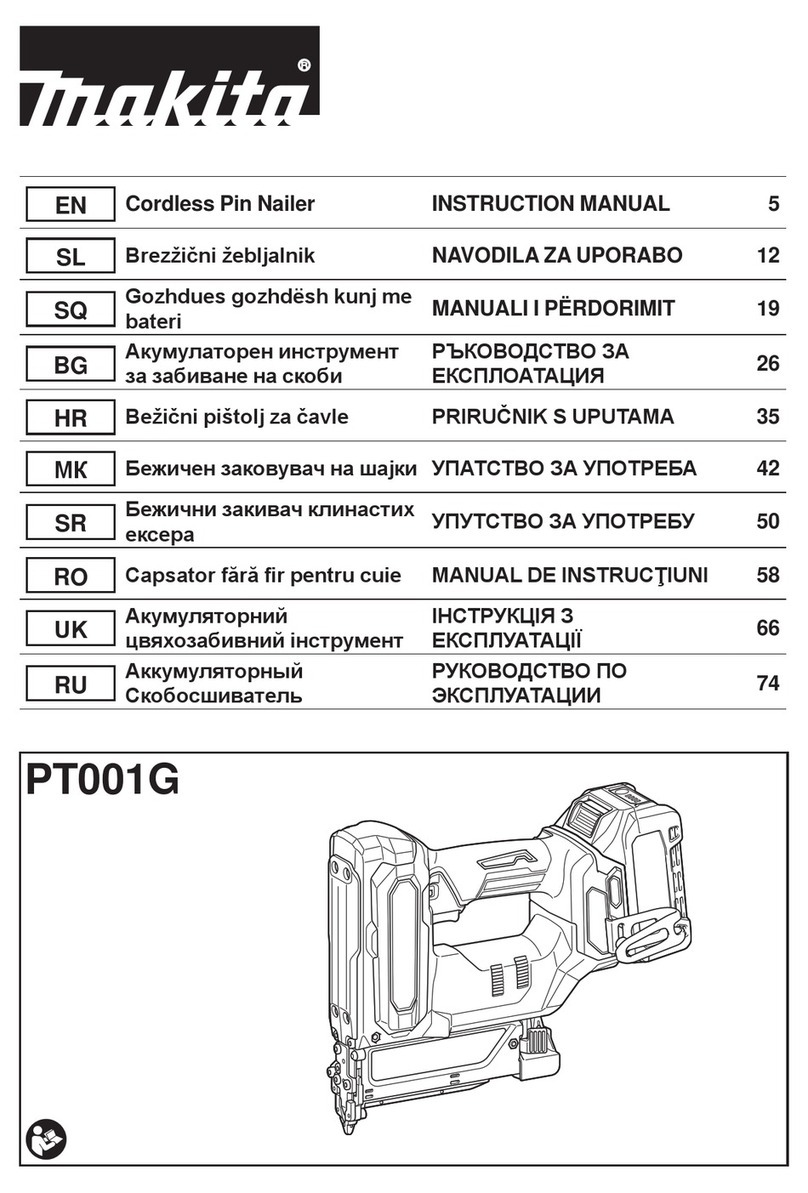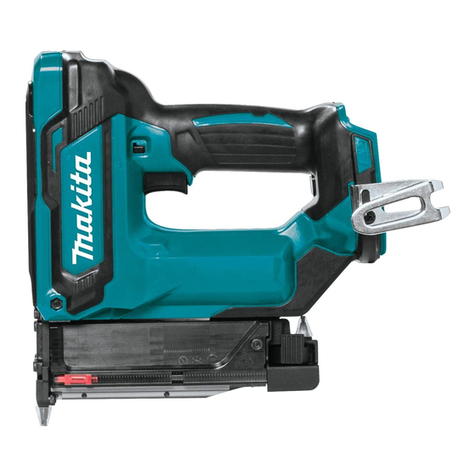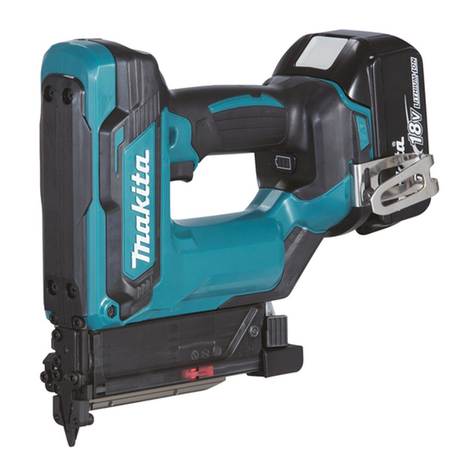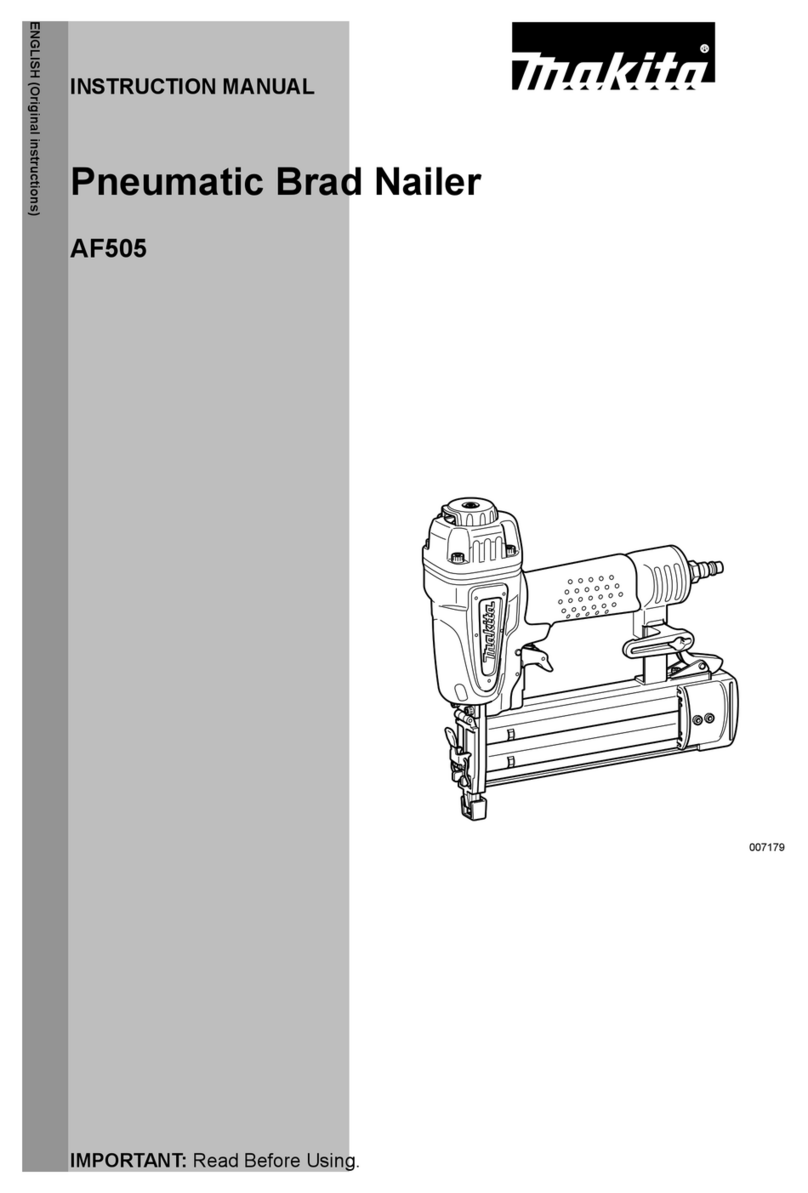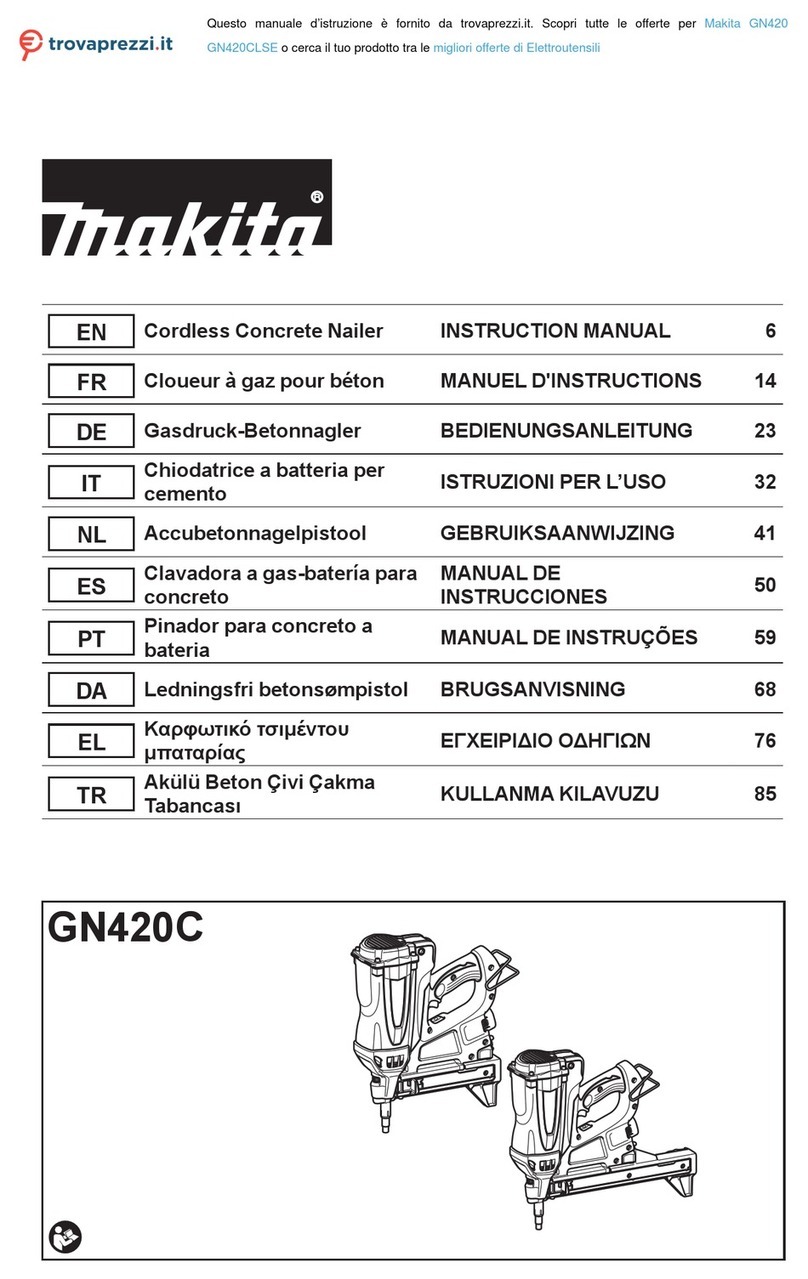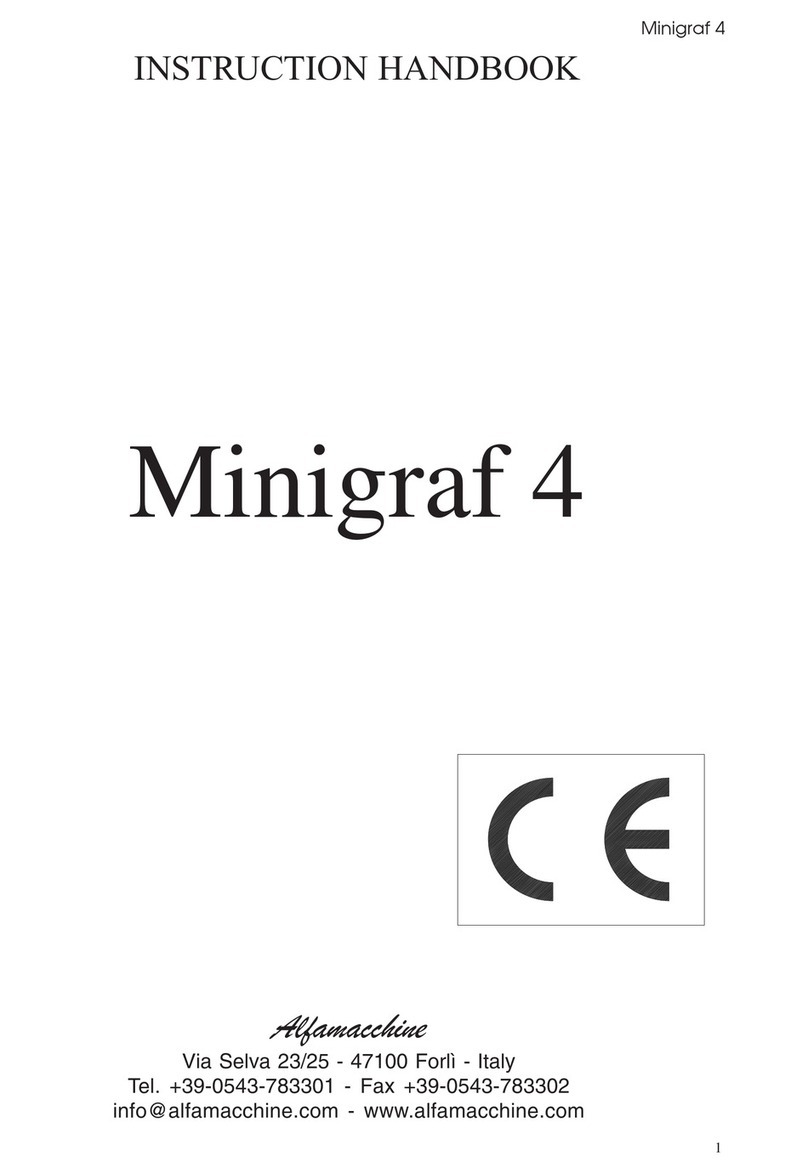
8ENGLISH
Repetitive motions hazards
1. When using a tool for long periods, the oper-
ator may experience discomfort in the hands,
arms, shoulders, neck, or other parts of the
body.
2. While using a tool, the operator should adopt
a suitable but ergonomic posture. Maintain
secure footing and avoid awkward or off-bal-
anced postures.
3. If the operator experiences symptoms such
as persistent or recurring discomfort, pain,
throbbing, aching, tingling, numbness, burn-
ing sensation, or stiffness, do not ignore these
warning signs. The operator should consult a
qualied health professional regarding overall
activities.
Accessory and consumable hazards
1. Disconnect the energy supply to the tool, such
as air or gas or battery as applicable, before
changing/replacing accessories such as work-
piece contact, or making any adjustments.
2. Use only the sizes and types of accessories
that are provided by the manufacturer.
3. Use only lubricants recommended in this
manual.
Workplace hazards
1. Slips, trips and falls are major causes of work-
place injury. Be aware of slippery surfaces
caused by use of the tool and also of trip haz-
ards caused by the air line hose.
2. Proceed with additional care in unfamiliar
surroundings. Hidden hazards may exist, such
as electricity or other utility lines.
3. This tool is not intended for use in potentially
explosive atmospheres and is not insulated
from coming into contact with electric power.
4. Make sure there are no electrical cables, gas
pipes etc. that could cause a hazard if dam-
aged by use of the tool.
5. Keep work area clean and well lit. Cluttered or
dark areas invite accidents.
6. Illuminate the work area sufciently.
7. There may be local regulations concerning
noise which must be complied with by keeping
noise levels within prescribed limits. In certain
cases, shutters should be used to contain
noise.
Dust and exhaust hazards
1. Always check your surroundings. The air
exhausted from the tool may blow dust or
objects and hit operator and/or bystanders.
Noise hazards
1. Unprotected exposure to high noise levels can
cause permanent, disabling, hearing loss and
other problems such as tinnitus (ringing, buzz-
ing, whistling or humming in the ears).
2. Appropriate controls to reduce the risk may
include actions such as damping materials to
prevent workpieces from “ringing”.
3. Use appropriate hearing protection.
4. Operate and maintain the tool as recom-
mended in these instructions, to prevent an
unnecessary increase in noise levels.
5. The noise values are tool-related characteristic
values and do not represent the noise gener-
ation at the point of use. Noise at the point of
use will for example depend on the working
environment, the workpiece, the workpiece
support, and the number of driving operations.
Vibration hazards
1. The vibration emission value is a tool-related
characteristic value and does not represent
the inuence to the hand-arm-system when
using the tool. Any inuence to the hand-arm-
system when using the tool will for example
depend on the gripping force, the contact
pressure force, the working direction, the
adjustment of energy supply, the workpiece,
the workpiece support.
2. Exposure to vibration can cause disabling
damage to the nerves and blood supply of the
hands and arms.
3. Wear warm clothing when working in cold
conditions, keep your hands warm and dry.
4. If you experience numbness, tingling, pain or
whitening of the skin in your ngers or hands,
seek medical advice from a qualied occupa-
tional health professional regarding overall
activities.
5. Operate and maintain the tool as recom-
mended in these instructions, to prevent an
unnecessary increase in vibration levels.
6. Hold the tool with a light, but safe, grip
because the risk from vibration is generally
greater when the grip force is higher.
Additional safety instructions for pneumatic tools
1. Compressed air can cause severe injury.
2. Always shut off air supply, and disconnect tool
from air supply when not in use.
3. Always disconnect the tool from the com-
pressed air supply before changing acces-
sories, making adjustments and/or repairs,
when moving away from an operating area to a
different area.
4. Keep ngers away from trigger when not
operating the tool and when moving from one
operating position to another.
5. Never direct compressed air at yourself or
anyone else.
6. Whipping hoses can cause severe injury.
Always check for damaged or loose hoses or
ttings.
7. Never carry a pneumatic tool by its hose.
8. Never drag a pneumatic tool by its hose.
9. When using pneumatic tools, do not exceed
the maximum operating pressure ps max.
10. Pneumatic tools should only be powered
by compressed air at the lowest pressure
required for the work process to reduce noise
and vibration, and minimize wear.
11. Using oxygen or combustible gases for oper-
ating pneumatic tools creates a re and explo-
sion hazard.
12. Be careful when using pneumatic tools as the
tool could become cold, affecting grip and
control.
